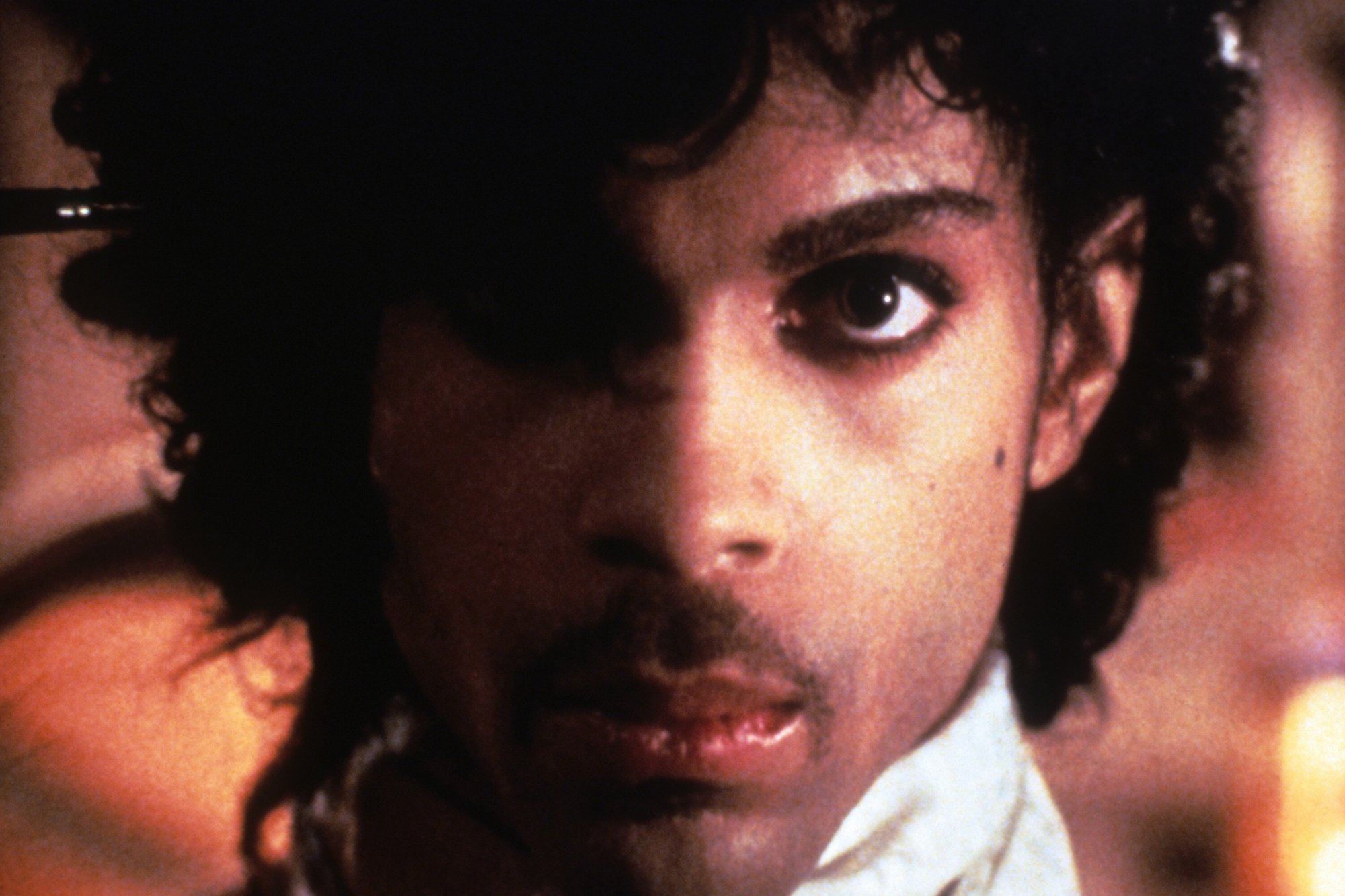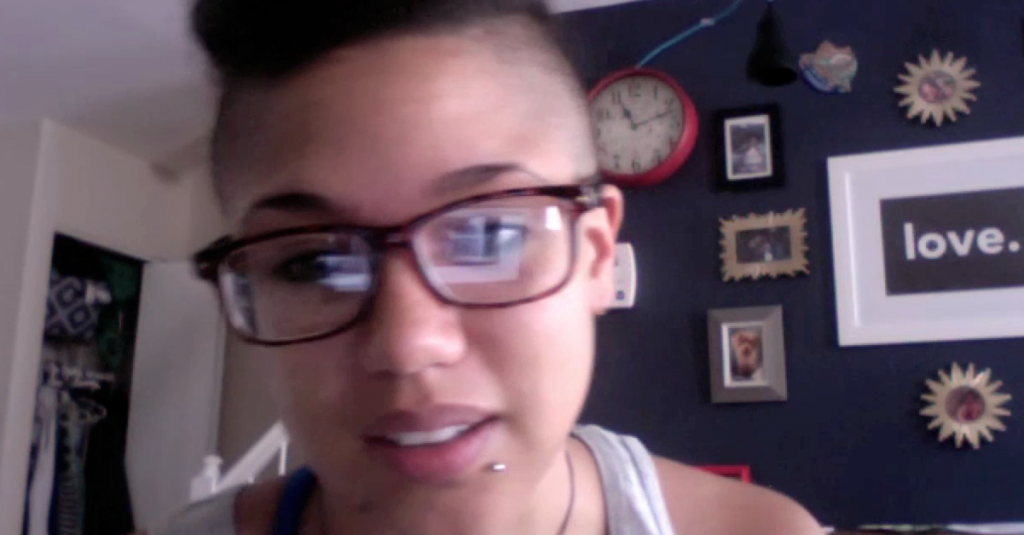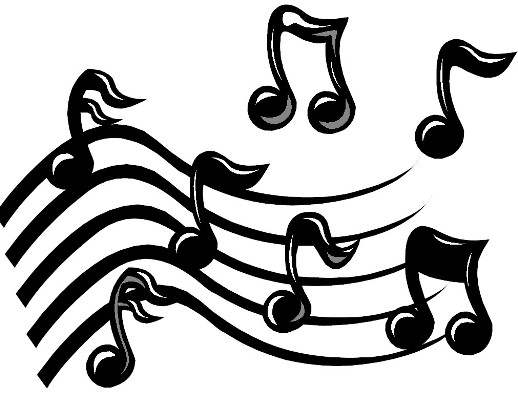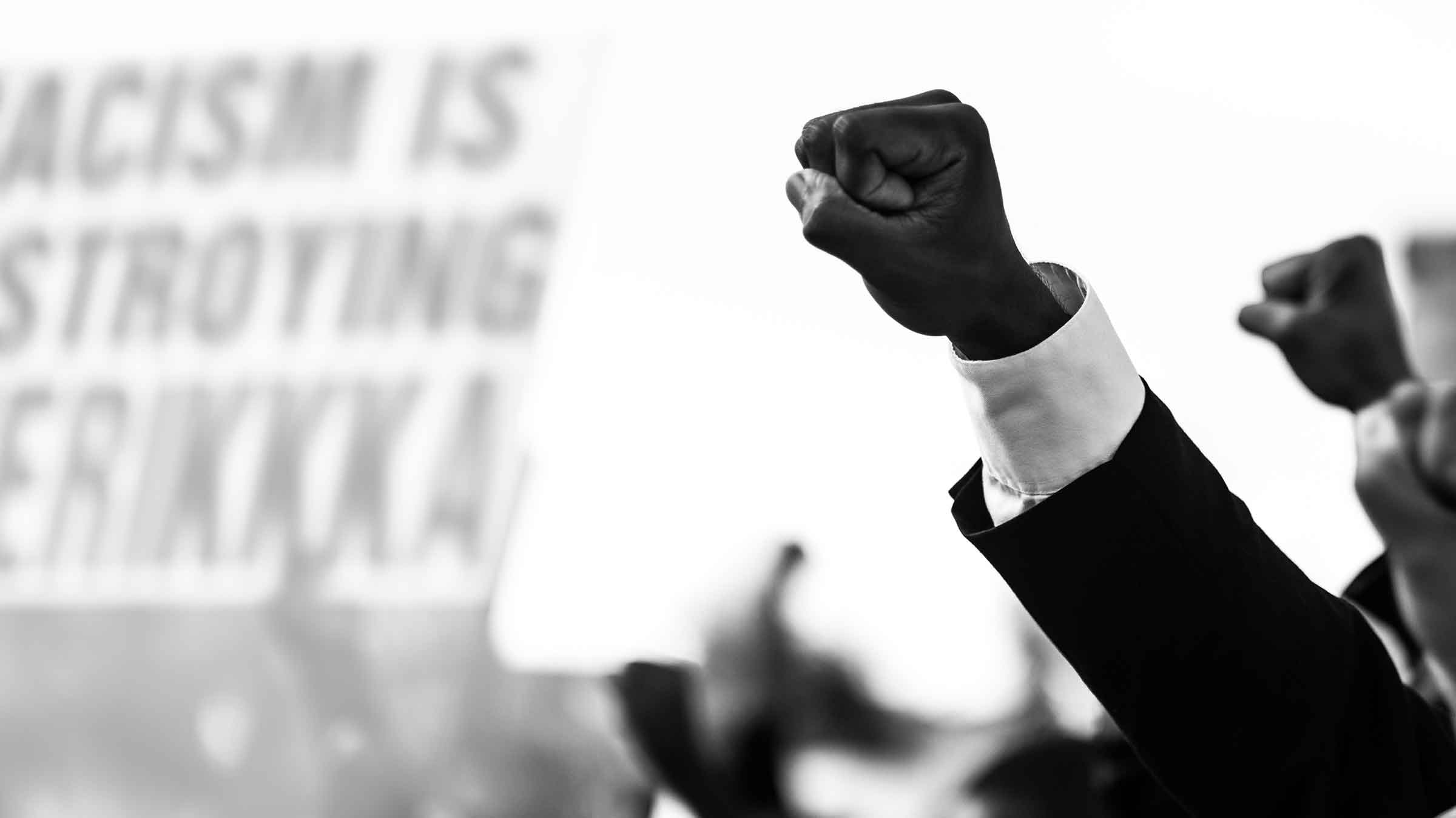 In The New Jim Crow, author and legal scholar Michelle Alexander charts the history of different Black rights movements in the United States, and the counter-efforts that rolled back important social, political, and cultural advances that these movements engendered.
In The New Jim Crow, author and legal scholar Michelle Alexander charts the history of different Black rights movements in the United States, and the counter-efforts that rolled back important social, political, and cultural advances that these movements engendered.
Reconstruction followed slavery, but Jim Crow stymied further attempts at Black liberation and social betterment. The Civil Rights Movement ended Jim Crow, only for poor Blacks to face stringent tough-on-crime laws and the War on Drugs, leaving one in every 15 Black men incarcerated.
Now, we have Black Lives Matter. More people are learning about the racial disparities of our prison system, our jobs, our schools, and other institutions. At the same time, musicians like Kendrick Lamar and Beyoncé are creating unapologetic pro-Black music and videos, powered by young masterminds like Kahlil Joseph and Warsan Shire.
In journalism, TV, fiction, and film, Ta-Nehisi Coates continues the legacy of James Baldwin, while Hilton Als, Ava Duvernay, Jacqueline Woodson, Edward P. Jones, Viola Davis, Kerry Washington, Channing Dungey, and so many others lead the current surge of Black creativity and power.
We’re also in a period of hyper-awareness. Not only do more and more people protest Hollywood’s continued casting of non-white roles with white actors — we’ve now upped the ante and gone even deeper, debating the casting of such roles as Zoe Saldana as Nina Simone. At the same time, we’re still seeing so many Black firsts in healthcare, in government, and in such uncommon headlines as Warren Shadd and his achievement of being the first Black piano manufacturer.
Despite recurring periods of cultural, political, and social forces repelling and subjugating it, Black culture in the United States has always gone underground, revived, and then resurged. Are we now experiencing another confluence all at once — a cultural, political, and artistic renaissance?
I touched base with several Black writers, actors, activists, and intellectuals — even a soul food critic — and asked: are we in the middle of the next Black Renaissance?
Ernest Waddell, Actor
I think we’re in a time where the US is becoming more tolerant of Black excellence and Black ideas. And maybe as a result, there are now more Black people who are willing to take more creative risks. I also think the Internet has given all people more of a voice. The creative renaissance of 50 years ago, 20 years ago even, seems limited to accessibility.
Rebecca Kent, Documentary Producer, Plus Pictures and CBS News
The Black Panthers, Vanguard of the Revolution
With the heightened awareness of acts of police brutality and daily acts of social injustice, we have seemingly arrived at a tipping point in Black culture which has increased Black cultural production. We’re living in a time ripe with unapologetic expression against systems of oppression through politics, song, film, and art. From Kendrick Lamar’s To Pimp a Butterfly to Beyoncé’s Formation, artists and artistic expression have taken on a more radical tone.
While Formation has of course inspired numerous critical essays listing its merits and deficiencies, one thing is clear — it has caused much conversation and debate. Her song provided the perfect vehicle to reach the masses and infiltrate popular culture, to initiate conversations and to hopefully affect change.
Adrian Miller, Soul Food Scholar
There’s definitely more interest in African American cuisine these days, but not where one would expect. Of the various riffs on traditional soul food, the most creative energy comes from those cooking vegan soul food. That’s right, no meat with your greens, and no dairy in all of those glorious desserts. Also, the hottest soul food spot in the world is . . . Paris, France! Just in the last two weeks, I’ve gotten interview requests from French media about soul food. This fascinates me because soul food still gets a mixed reception in its home country because many see it as inherently unhealthy and essentially slave food unworthy of celebration. It’s like the 1920s all over again.
Adrienne Kennedy, Playwright
Do not see a Renaissance coming.
It strikes me that when my husband and I came to New York in January 1955, and he was in grad school at Columbia and I took a few writing courses at the New School, etc., that we were in a Renaissance.
Perhaps it was because I was young — Hansberry Ellison Baldwin Brooks were all to follow. …….the Village overflowed with Miles Charlie Mingus midtown Birdland Joe Williams Dizzy Count Basie and so many more. Poitier arrived at the movies. ………but paramount was the attitude toward young blacks. our age…….the world seemed far more in tune to us and all of the above as. people. Now always we are this entity African Americans…… ….. and this antecedent. ….increasingly by American Society seems to carry a burdensome troublesome meaning……….about us.
We are not heading toward a Renaissance. I cannot see this. No matter what our brilliance we are chained to these old definitions. A Renaissance it would seem to me has to be a world that has
rid itself of those old clichés before the new can flourish …and be defined as such. Still.
no definition. is needed for Louis Armstrong. and I cling to no definition just infinite struggle.
Adrienne Kennedy
Nafis White, MFA Candidate Digital + Media, Rhode Island School of DesigN
“Are we in the middle of the next Black Renaissance?”
When I was first asked this question I thought, well of course we’re in a Black Renaissance, because we’re seeing blackness in all its beauty all around us, all the time, and ain’t that glorious!!! To see all this representation and to see all this artistry growing where it wasn’t before, or perhaps we may think it wasn’t prevalent before.
Somewhere between the 1920s and the 1980s not much was happening, or was it? But then I got to thinking about the Black Arts Movement of the 1960s, and the New Black Renaissance of the present day, and about why I feel that all of a sudden there’s such a crop of talent the world over, of melanin-laden, blessed women and men doing the damn thing.
I started wondering about representation and about what was happening in the 60’s and 70’s with Black Art and who the players were then. We had Melvin Edwards, Betye Saar, Adrian Piper, David Hammons, Fred Wilson, Senga Nengudi, Maren Hassinger, Noah Purifoy, Glenn Ligon, and a host of others, yet these artists, though credited now, were not widely recognized then, and some might argue that they’re still not widely known or given their due.
I recall seeing a stirring exhibition while in New York at PS1 in 2013, called “Now Dig This! Art and Black Los Angeles,” curated by Kellie Jones, Associate Professor in the Department of Art History and Archaeology, Columbia University, and I felt that all of a sudden, Black artists had been made visible who weren’t there in my lexicon and my life before, and it saddened me that these prolific artists were just under the radar.
Through reading Double Consciousness: Black Conceptual Art since 1970, I discovered some unknown players and kept adding to my knowledge of Black greats all across the scene. I love Jean-Michel Basquiat, but there are so many more people that should be made available, visible to us, and this exhibition and book got me looking and questioning why these brilliant people were absent to me for so long, especially as a fine artist who is part of the African Diaspora.
Why a Black Renaissance, and why now? We have so many gifted Black artists on the scene and so many up and coming. There is Toyin Odutola, Simone Leigh, Sanford Biggers, Carrie Mae Weems, Yinka Shonibare, Hank Willis Thomas, and Jacolby Satterwhite, Juliana Huxtable, and Niv Acosta and so, so, so many more hundreds of brilliant beings doing what they love and making immense gains and inspiring us all.
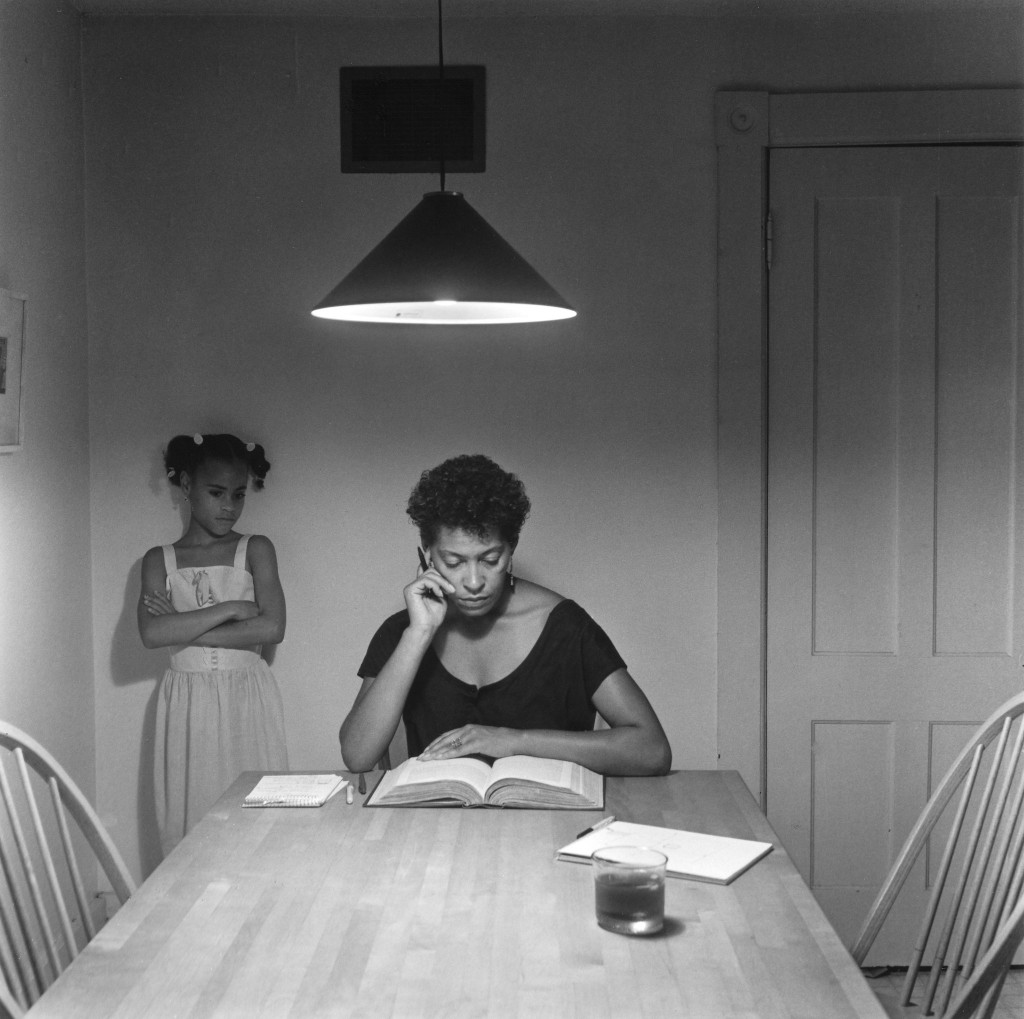
I feel that the reason why we’re so acutely aware of all these talented people now has a lot to do with social media and the transference of information across the Internet. We have so much access and are able to find talent everywhere with a few searches.
Decades ago, you may have had to follow a crowd to find Hammons or Saar, or be in the know with curators or museums, or get lucky through word of mouth and underground artist communities. Now, you can reach out and find your artist family so much more easily. Technology allows us to make connections and collaborations so much more readily.
So, the answer to the question of, are we in the middle of the next Black Renaissance is yes, a resounding YES!, all the while knowing that there was an enormous amount of Black pioneers making art back in the day, in the 60’s and 70’s and 80’s. We don’t know many as household names because they weren’t widely sold, represented, or known, but that doesn’t mean they weren’t there or that they are forever gone from memory. They can be found.
Now, we thankfully can find artists more easily, and we can celebrate them while they are still alive. That is one of the many gifts of technology — we get to be a little closer while we’re all here on this wonderful planet. Don’t know Kerry James Marshall? Get in touch. Barely heard of Theaster Gates? Betta look him up. Curious about Faith Ringgold? That beautiful sister is still walking this Earth. Didn’t know Betye Saar had a daughter named Alison? Who, what?? You guessed it, she’s an artist. Get into them!!
James Rucker, Co-Founder, Color of Change
Are we in the midst of a Black Renaissance? The answer in my view is yes, absolutely. From my youth through today, a period spanning approximately 40 years, me and most other Black Americans approached change-making with a degree of measure, and a willingness to make do — to push the envelope of culture to fight for inclusion and increasing justice, but not too much.
Sure, you had front-line activism and pockets of pushback, but the intellectual class would be split between marginalized revolutionary types (marginalized by essentially every quarter, white, Black, and otherwise) and those who sought to make change happen, largely within certain bounds set and blessed by mainstream society. There was the balancing act of acceptance of things as they were, on one hand, and pushing for change on the other.
Today is a different day, due in large part, I think, to younger folks who’ve taken a fresh look at our country’s history — including not only the plight of Black people but others who’ve been poorly served or oppressed — then taking stock of the status quo and what justice should look like, and then demanding step-wise, not gradual, change towards justice.
I recall as a young software engineer, wanting to bring in more Black engineers into companies in which I worked but at the same time was careful to not rock the boat and attempt to bring in too many. Contrast this with a lawyer I met few years ago who is part of a well-known high-flying startup’s legal team. In response to boss’ goal of diversification, he brought in only Black lawyers for interviews to fill a set of open positions. When questioned about why all the candidates he brought in were Black, he explained that if the company wanted diversity, he was going to bring it. He was playing from a different playbook.
Similarly, after nearly a decade of running and supporting political organizations that both worked on the inside and outside of government, with arguably the most aggressive large-scale campaigns in existence, I saw young organizers throwing down with unapologetic ferocity, dismissing the idea of respectability politics, yet operating with a clear sense of strategy, context, and history. I believed I was witnessing a reinvention of the playbook for creating political and social change.
I’m talking of Black Lives Matter and similar efforts, which risked a backlash from other Black people, and certainly most non-Black Americans. Yet they are withstanding the backlash, changing the perception of what is possible and appropriate and embracing intersectionality (for them, it’s not about Black people alone, but freedom and love of humanity across the board). And there are hundreds of these folks, if not more — powerful organizers who are connected and operating within the same paradigm.
For the last few generations, Black Americans have operated within a context of extreme injustice, yet being largely polite. This despite our communities having been decimated by racist policies that affect mobility, dignity, and freedom, as well as the simple ability to live stable and happy lives. In the face of that, we have been taught — and reflected back to each other — that success is to withstand it and attempt incremental change.
It isn’t just the set of groups and efforts that fall within the Movement for Black Lives, or what may seem to be a new frontline of activism. That’s simply one facet of the kind of change in front of us. The rise of public intellectuals like Ta-Nehisi Coates, Michelle Alexander, journalists like Shaun King — people who have gained a strong prominent voice both in the eyes of Black America and people of conscience within American in general — is testament to something bigger. And while there has been backlash, for sure, progressive white Americans are being given a more accurate report card of the state of affairs in America than has ever been present during my lifetime.
And while the work of this community of activists, intellectuals, artists, and funders, is centered on Black liberation, the landscape of problems and the push for solutions is broader. There is a critique of systems of oppression, whomever they oppress, and it is anchored by the notion of human liberation.
Activists often quote the words of Assata Shakur: “It is our duty to fight for our freedom. It is our duty to win. We must love each other and support each other. We have nothing to lose but our chains.” On the one hand, this is about those taking major risks to achieve change speaking to each other, but I’ve repeatedly witnessed these activists speaking of their desire for increased humanity and freedom for all — even for those who are in opposition, and who are part of maintaining the status quo, actively or passively.
And these voices, these Black Americans, not only speak to a new view of liberation, but they themselves largely embody it in their individual and collective identities. For them, it’s not just that who is in the fold of being loved and deserving of justice is broad, but some of the most powerful voices are LGBTQ, female, and young (and often a combination) who are not only dedicated to Black liberation, but human liberation, and beyond the borders of the United States.
Aimee Allison, Author and Activist
We are in a Black Renaissance, and it is led by Black women. Look at the freedom in hair styles, large and creative. Hear the powerful voices leading the Civil Rights movement of our day, demanding accountability from candidates, entertainers, the masses. Make them say the names of those abused and killed on the state’s dime.
There isn’t a hint of pleading, or relying on a better moral nature. It heeds Shirley Chisholm’s call to demand power directly. It draws in people from communities who themselves have suffered. Our Renaissance unifies. See how women won’t play second to any man, including Black men who expected race to be more important than being a women.
Nope, it’s intersectional all the time, and this Renaissance embraces the nuance of identity on the scales of race and sex and sexuality. Notice that we’re stronger because we lead nuance. Pick up a copy of Claudia Rankine’s Citizen, and her sparse, powerful words lead a national struggle to understand what it’s like to live under racism daily. It’s a bestseller for a reason.
And read this: Black women have the highest voter turnout of any race, any gender, any group of voters. We have the power to choose presidents now. But we’ve been the most ignored power block.
Our new-style Black power comes when we tell the Democrats that we won’t let our backs be the path to the White House without our vision, our change, our leadership. Our voices are no longer silent or stigmatized as Bill Clinton found out when he tried to “Sistah Soldier” Black Lives Matter protesters last month. That doesn’t fly in this Black Renaissance.
We’re bold now, with many voices, many leaders. We define trends on Twitter. We can do a collective take-down fast when racism tries to pull a fast one. It’s ‘no more White tears’ and ‘it’s not for you.’ Yes, an amazing time to be Black in America because despite it all, we’re finding new strength, courage, and influence.
Aimee Allison’s new book, She the People: The New Politics of Women of Color, is out in September 2016.

